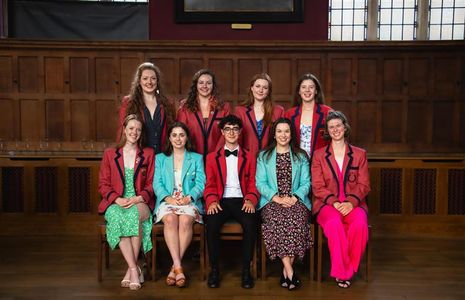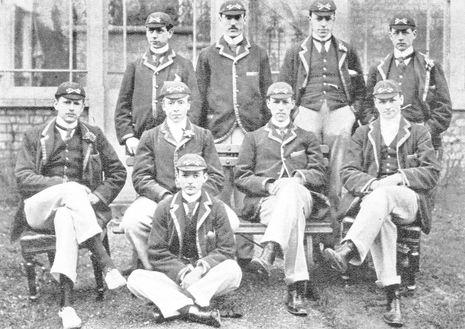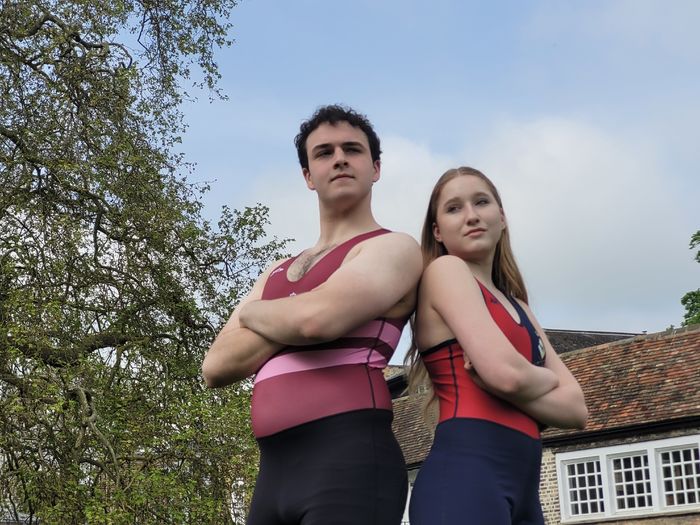The rowing blazer: A Cambridge tradition
Annia Krzoska explores the checkered history of this Cambridge fashion oddity
Every Cambridge student is familiar with the legendary scenes at the post-Boat Club Dinner MASH. Hundreds of rowers gather in the club‘s queue to celebrate a term’s worth of strenuous rowing, many of them donned in traditional and iconic rowing blazers. As Michaelmas approaches, ushering in a new wave of enthusiastic boaties, it’s an ideal time to delve into the history of this infamous garment.

The story of rowing blazers can be traced back to St John’s College. In 1825, the Lady Margaret Boat Club (LMBC) opted to wear ‘blazing red’ coats as a way to express club pride through their kit. Initially, these blazers served a functional purpose, keeping rowers warm during those early morning Lent term training sessions. In stark contrast to today’s sleek designs, the original LMBC rowing blazers were loose-fitting, lacking shoulder pads and any lining in the back. It was both from St John’s and the distinctive “blazing red” colour of the club’s coats, that the name ‘blazers’ was coined.
“In 100 years, the rowing blazer has changed from the kit of one college to the symbol of rowing clubs internationally”
The early rowing blazers, made from flannel, prioritised functionality over style. They were interchangeable with jerseys in the rowing kit, primarily serving to keep rowers warm. If we were to draw a modern parallel, these early blazers were akin to today’s club branded fleeces or jackets, rather than formal garments.
Over time, this windbreaker-style garment spread across the Oxford and Cambridge boat clubs. Rowing blazers, customised to each individual club, were worn at Henley Regatta in 1825. No longer ‘blazing red’ coats to keep the rowers of St John’s College warm in the winter, the rowing blazer had evolved into a tradition of rowing pride - and many were not red. These first blazers were eventually repurposed from use in water to use on land, earning their own legendary histories and traditions beyond mere expression of club pride.
“From weathered kit to badge of pride to clubwear, the rowing blazer has travelled a long way since its inception”
Some clubs made their blazers from the curtains of their host school or college, and the Dutch rowing blazer became a traditional garment that would be handed down throughout generations, and would only be washed when a varsity race was won. As a result, Dutch rowing blazers often appear tattered, stained and ill-fitting, but the story behind them has won them world renown.

Rowing blazers today are crafted from good quality cloth and fitted with shoulder pads and small pockets. The front is often emblazoned with either the club logo, or fitted with the club’s stripes. It would, to many rowers, feel impractical to wear their rowing blazers on the water because the sleeves can feel restrictive, and the thick material does not mix well with a splashy or unbalanced boat. In 100 years, the rowing blazer has changed from the kit of one college to the symbol of rowing clubs internationally. Looking at the photographs in St Catharine’s College Boat Club, it appears as though the rowing blazer had a strong grasp on the rowing community by the 1920s, as the men’s first VIII can be seen sat behind the club flag in identical blazers emblazoned with the wheel.
It is difficult to imagine the rowers of 1825 learning that their training coats would one day be worn as the wearer dances to Dizzie Rascal’s Bassline Junkie, but the rowing blazer’s monopoly over the post-BCD fashion scene is undeniable. From weathered kit to badge of pride to clubwear, the rowing blazer has travelled a long way since its inception. We can only hope that this tradition continues in the years to come, with help from this year’s freshers!
 News / Cambridge students set up encampment calling for Israel divestment6 May 2024
News / Cambridge students set up encampment calling for Israel divestment6 May 2024 News / Cambridge postgrad re-elected as City councillor4 May 2024
News / Cambridge postgrad re-elected as City councillor4 May 2024 News / Proposed changes to Cambridge exam resits remain stricter than most7 May 2024
News / Proposed changes to Cambridge exam resits remain stricter than most7 May 2024 News / Some supervisors’ effective pay rate £3 below living wage, new report finds5 May 2024
News / Some supervisors’ effective pay rate £3 below living wage, new report finds5 May 2024 Fashion / Class and closeted identities: how do fits fit into our cultures?6 May 2024
Fashion / Class and closeted identities: how do fits fit into our cultures?6 May 2024






